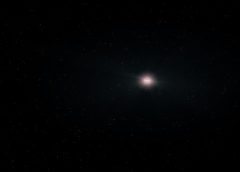What is the HUMANITY STAR?
Humanity Star is a passive satellite, a geodesic sphere similar to a disco ball about 3 feet in diameter. It is designed to produce flares visible from Earth.
The satellite was put on top of an Electron rocket by the New Zealand based subsidiary of Rocket Lab. Humanity Star was launched into polar orbit on January 21 2018 at 01:43 UTC after being launched from Rocket Lab Launch Complex 1, located on the Māhia Peninsula of New Zealand.
According to Rocket Lab, it is meant to be “a bright symbol and reminder to all on Earth about our fragile place in the universe.
Rumblings From the Scientific Community…
Humanity Star is receiving some negative feedback from those in the scientific community. There’s belief that the flare magnitude would potentially be so high, that the disco ball could interfere with their astronomical observations.
Another reason that some find this launch problematic is that they feel that Rocket Lab is adding to the already growing cloud of space debris that is orbiting our planet by a what is considered a purely symbolic satellite that has no real scientific purpose.
Is Humanity Star a Triumph or Fizzle?
Rocket Lab says that the satellite’s brightness is estimated to be about magnitude 7.0 under reasonable viewing conditions, with a single pass no brighter than magnitude 4.6, which is the limited of viewing with the unaided eye.
Even though Humanity Star has attracted the ire from some in the scientific community, Humanity Star’s time in space is number. In about nine months, the crafts’ orbit will decay and it will fall back to Earth.


